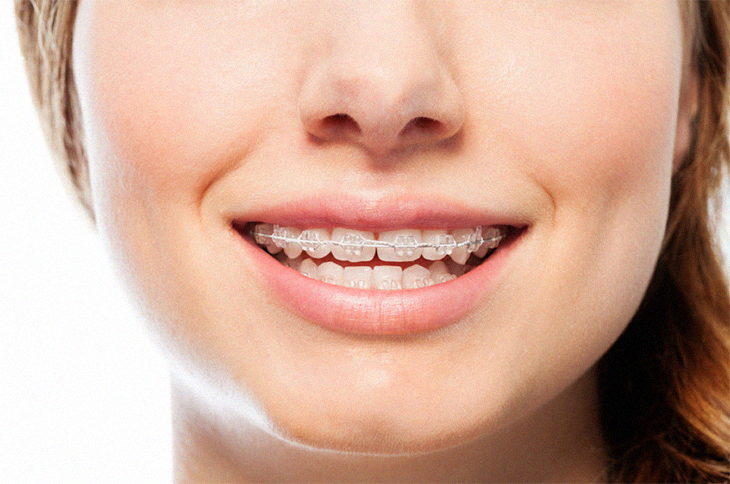
Whether you’re in your teens or an adult who is looking to correct your smile, there is no shortage of orthodontic treatments on the market in 2021. With a variety of different options to choose from, ranging from traditional metal braces to lingual braces and invisible braces, choosing the best one for your individual needs may seem like a monumental task. Today, we take a deep dive into everything you need to know about clear/invisible braces – the pros, the cons and the costs in order to help you make a decision on whether invisible braces are the right option for you. Read on to find out more!
What Are Invisible Braces?
As the name suggests, invisible braces are a more discrete version of traditional metal braces. The main difference between the two is that invisible braces (also commonly referred to as ceramic braces) utilise clear brackets rather than metallic silver brackets and wires. Many people opt for invisible braces because they are less noticeable on your teeth, making them a popular option amongst adults and teens who may feel self conscious about needing orthodontic treatment.
Invisible braces can take anywhere between 18 months to 3 years to straighten teeth, offering a slower adjustment time when compared to traditional metal braces. This is due to the fact that invisible braces are made of ceramic and aren’t as durable as metal, meaning brackets need to be replaced more often to prevent them from breaking under pressure.
The Cost Of Invisible Braces
When it comes to the cost of invisible braces, you can expect to pay anywhere between $4000-$8000. This makes invisible braces slightly costlier than traditional metal braces that usually cost between $3000-$6000. Do note that the difference in costs can vary depending on the level of orthodontic treatment you will need, and the sums listed in this article is just an estimate! In order to get a better idea on how much your invisible braces will cost you, consult with your dentist or orthodontist who will be able to give you a more accurate estimation.
Pros of Invisible Braces
The Discreet Option
Invisible braces are an incredibly discreet option and thus less visible which may be a factor that is taken into account should you feel self conscious about having orthodontic treatment.
They Work Faster Than Clear Aligners
Another discrete orthodontic option are clear aligners. However, although clear aligners are also rarely noticeable, they do take much longer to shift your teeth when compared to invisible braces and aren’t always suitable for severely misaligned teeth.
Comfort Level
Invisible braces are known to cause less irritation to the gums than traditional metal braces. Considering you’ll be wearing your braces for a minimum of 18 months, this can be a major factor in the decision making process.
They Don’t Interfere with X-Rays and Other Imaging Tests
Unfortunately, metal braces can cause interferences in X-rays and other imaging tests. Invisible braces on the other hand produce much less signal interference.
Cons of Invisible Braces
You May Experience Staining
Since ceramic is a very porous material, it is more prone to staining than traditional braces. This means you will have to be careful about the types of food and drink you consume and stay on top of cleaning them to avoid staining. You will also have to be cautious of smoking which can also stain your braces.
Higher Cost
Ceramic braces are slightly more expensive than regular braces, but do note that they are at the same time cheaper than invisible aligner trays.
May Not Be For Everyone
If you are someone who suffers from malocclusion or severe misalignment and overcrowding, ceramic braces may not be the option for you. Traditional braces on the other hand are able to help virtually anyone who needs to correct their smile.
So, Are Invisible Braces Right For Me?
Invisible braces may or may not be the right option for you, depending on the severity of misalignment on top of other factors such as cost, maintenance and so on. If you would like to find out if you’re a suitable candidate for invisible braces, don’t hesitate to reach out to your local dentist or orthodontist who will be able to give you a full examination and help you decide on the best orthodontic treatment for your individual circumstances.









































